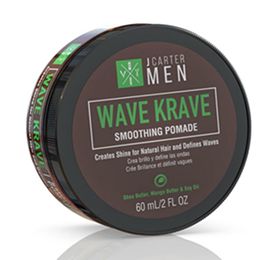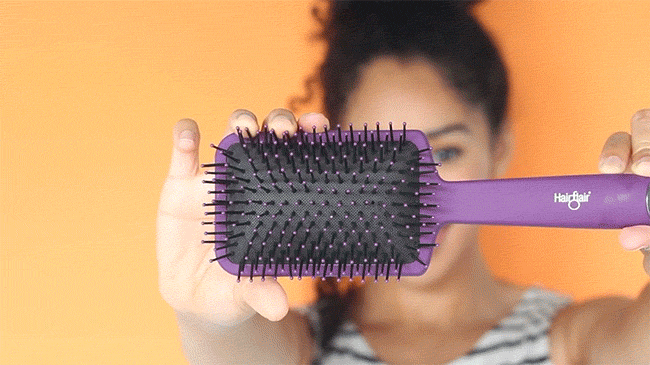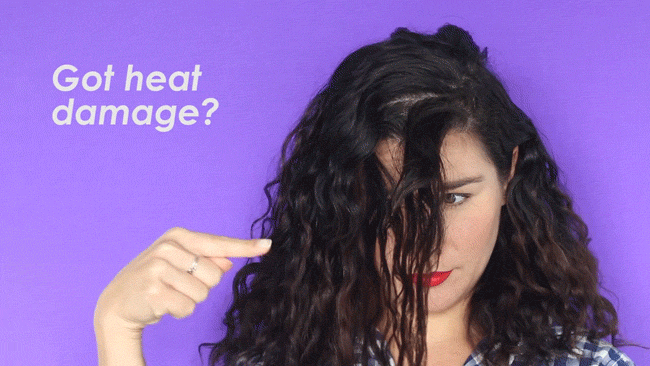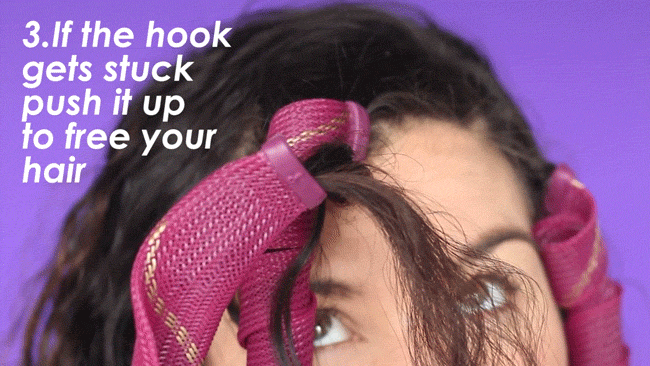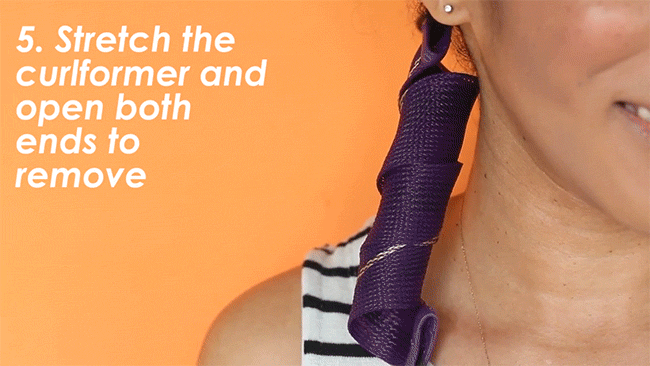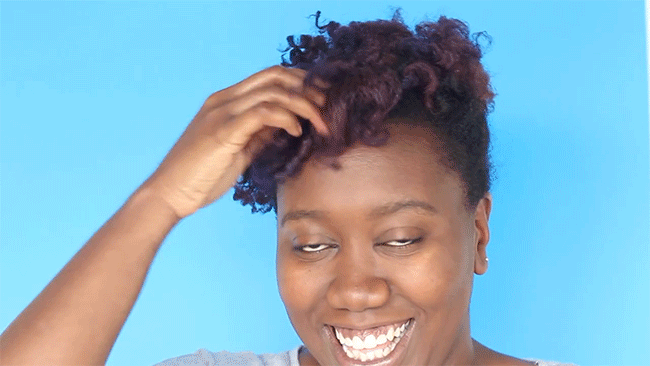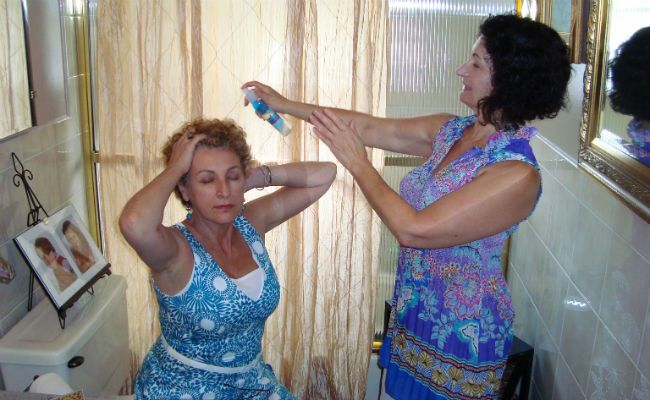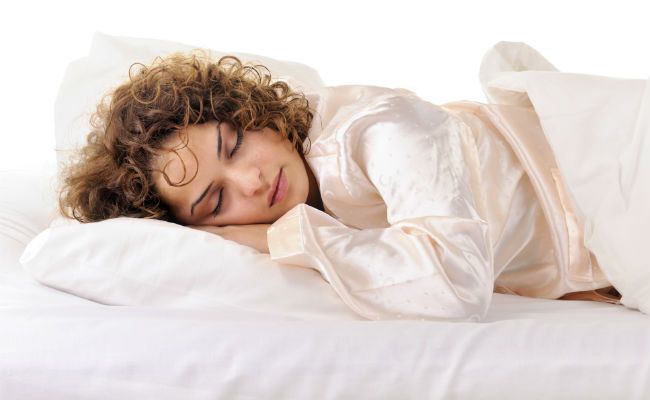Search Results: NaturallyCurly
Curly girls can spend years searching for the perfect curl enhancing gel that gives the shine, bounce, and hold without crunch that they are looking for. For Product Junkies, the search for the perfect product is a fun one, and other curlies in the community prefer to take matters into their own hands with DIY.
Here is a 100% organic DIY gel that you can make at home that harnesses the benefits of Vitamin B5, and the reasons it is so nourishing for your hair. You can get the NOW Foods Vitamin B5 capsule brand at most drugstores, Whole Foods, or GNC.
DIY Vitamin B5 Curl Enhancer
Karine of the blog Water Roots uses this recipe of all organic ingredients as a curl enhancing gel.
- 1 Tbsp Aloe Vera gel to hydrate and nourish your hair
- 1 to 2 Drops Pro Vitamin B5/DL Panthenol to strengthen, repair weak curls, and boost shine.
- 1 to 2 Drop Silk Extract to retain moisture and protect the hair follicle
- 1 Drop Essential Oil–either lavender or rosemary to soothe your scalp
- Optional: Rice protein Liquid to hydrate and add volume and Argan Oil to nourish
Mix everything together in a bowl, and place in a glass jar to store away. Use this for 2 weeks maximum if used without preservatives.
We recommend applying this gel to wet or damp hair when styling freshly cleansed hair. When reviving 2nd or 3rd day hair, spray your hair with water to dampen it and then scrunch a small amount of gel from the ends up to the roots to reactivate your curls.
Why use Vitamin B5?
Vitamin B5, also known as pantothenic acid, is a nutrient that you will find in most of your hair and skin care products these days.
It supports the production of protein-rich tissues like collagen and keratin. This water-soluble vitamin cannot be stored by your body although you still need to acquire it from a well-balanced diet and lifestyle.The benefits for your hair
For hair, vitamin B5 benefits the natural keratin found in our hair. It helps prevent hair loss, keeps hair from going grey and helps to retain natural color and luster. Most salon products and treatments contain B5 as part of nourishing treatments to clients who want to straighten or color their hair.
The collagen and keratin help to prevent hair breakage, makes hair stronger and keeps hair from getting too dry and brittle. Vitamin B5 is also used to treat hair loss and hair shedding too. Its natural anti-inflammatory and antimicrobial properties make it an ideal ingredient for deeply cleansing the scalp after taking down a protective style.
How else can you get Vitamin B5?
Luckily, there are a lot of common foods that we consume that provide us with the pantothenic acid we need.
- tuna
- chicken
- milk
- yogurt
- cooked broccoli
- avocado
- lentils
- sweet potatoes
- mushrooms
- whole wheat bread
If you feel as though you still need more vitamin B5 in your diet you can take vitamin supplements as well.
Have you made your own gel? What ingredients do you use?
There are some curlies who like to master a go-to look that they can reliably return to each morning. Then there are the curlies who love to transform their look with versatile styles and techniques. NaturallyCurly Editor Devri Velazquez is one of the latter. Every week she is wowing the office with a gorgeous new style and this week was no different.
When we received Faux Locs by Khinky.com Devri was excited to try temporary dreadlock extensions that could look realistic. A representative from Khinky instructed Devri’s stylist on the best installation technique for her hair (she used the crochet method”>.
The synthetic fibers of the hair are extra light weight, making them perfect for protective styling.
What did Devri think of the faux locs?
“Even though it was synthetic hair, it still looked like human hair to me. I loved the hair, I loved that they customized it to look like my hairtype. The faux locs are inexpensive even though they look expensive, so I’d say they’re high quality, which is a big deal to me. That alone would be enough to sell me on trying these.
I’m going to reuse these faux locs over and over.”
If you’d like to try these Temporary Faux Locs for yourself, you can purchase them at Khinky.com.
Update to post: The giveaway associated with this post ended on February 27, 2016.
This post is sponsored by Khinky.
Whenever I would straighten my hair, my dad would ask me why I was wasting my time and making the house smell. No matter how much I cranked open the bathroom window or sprayed Febreeze, the scent of burning plastic coming from my flat iron would ultimately spread throughout the house. But I still did it anyways. After all, it was worth the extra compliments. Right?!
For much of middle school and high school, sleek, straight hair was the style of choice.
I would spend countless Sunday afternoons standing in front of a bathroom mirror straightening my hair, which was no easy task; it took me two hours to complete. At the time, I didn’t know how to properly take care of my naturally curly hair or what products to use or even what heat damage was. My curls were subpar and I was clueless as to why.
By the time I hit senior year in high school, straightening my hair became a draining task that I dreaded. I got tired of waking up extra early just to go over my hair with a flat iron before heading to school.I was simply over it. There was no ah-ha, eureka moment.
I could not bother with the extra effort and upkeep. I had lost patience with the process. Having straight hair truly did not make me any happier, so why continue doing it? Plus, I was about to begin university and knew I could be doing better things with my time. Unlike makeup, straightening my hair did not enhance my natural features–all it did was make me look like a different person and stink up my house!
Fast-forward to today.
I have graduated from university and have not straightened my hair for over four years. My curls are in their best condition ever. I love them and I embrace them. Funnily enough, these days I get just as many, or maybe more compliments on my curly hair than I did when it was straight. There definitely seems to be a shift of acceptance, thanks Instagram and Tumblr!
Though I never, EVER think about straightening, I am not against it. I’m sure some day I may want to straighten my hair, in fact, now that my curls are completely restored I actually feel more comfortable doing so. I just won’t make it a Sunday afternoon chore.
Watch my video
How long have you gone without straightening your naturally curly hair? Let me know in the comments!
You want to grow your natural hair long, but constantly having to cut all of your split ends isn’t helping your retain any length. This is a common scenario that, believe it or not, is it possible to “fix” using a candlestick. The Velaterapia (“candle method””> treatment literally uses a candle to burn off split ends.
Feel like playing with fire? Leave it to the pros.
“Of course, playing with fire certainly comes with a risk, and shouldn’t be a DIY move,” says celebrity hairstylist Anh Co Tran. “It takes major control, which can be hard. I like to see exactly what to cut and what not to cut, so with the burning method, if you don’t stop it on time, you may take off more [hair] than you wanted.” Like most specialized hair techniques, this one requires a well-trained stylist to get the job done right. Trying this at home isn’t like opening a box of dye, or color–leave it to the pros.
Ricardo Gomes, NYC Maria Bonita Salon stylist who has used the candle method for three years now says that “a lot of people get confused about the treatment because they think it has to do with the wax of the candle, but it actually involves just controlling the flame.”
Like most specialized hair techniques, this one requires a well-trained stylist to get the job done right. Trying this at home isn’t like opening a box of dye, or color–leave it to the pros.
Other than playing with fire, clients, and stylists, also have to understand that the smell involved in this method isn’t always pleasant. Our hair contains keratin and sulfur. The burned hair smell can not only be extremely strong, but lingers for some time, too.
“It’s not so far-fetched that we’re playing with heat with the hair,” says celebrity stylist Sarah Potempa, who explains that sometimes hairstylists use heat in other ways, like by heating their scissors before giving a haircut. She also adds that women put intense heat on their hair regularly at home with hot tools, anyway.
How the candle method is done
For best results, the candle method requires dry, straight to loose wavy hair, which is then sectioned into smaller pieces, which are twisted. Then, the stylist runs the flame over the frayed pieces which stick out of the twist and burns them off. By twisting each section, stylists can ensure that only damaged hairs are removed. After this part is done, the stylist washes the hair and adds a deep conditioning treatment. With the heat having opened the hair cuticle, it’s an opportunity for nourishing vitamins to be added to the scalp and sealed in for restoration and reparation. The treatment and cold wash and rinse ensure that the cuticle is closed and aids in the growth of new hair. Lastly, the hair is usually blown out and a last “spot check” for any leftover split ends is done.
And while the idea of having your split ends be gone may be a nice one, the method isn’t for everyone. “It’s recommended for people who have pre-treated hair, highlights or use lots of hot tools. This is ideal for those people with lots of split ends who don’t want to cut the length,” says Gomes, who advises that only people with shoulder length hair or below consider the treatment.
And due to the nature of the candle method, it’s intense heat and shock to the hair, it is recommended that this method is only done every three to four months. In a salon such as Maria Bonita in NYC prices start at $150 and go to $250 depending on the type and length of the hair.
What exactly are plant stem cells?
A plant stem cell is a non-specialized cell capable of self-renewal. Meristem cells are stem cells found in plants.
What do plant stem cells do?
Stem cells are the most important cells in the skin. They are the source for continuous regeneration of the epidermis, the formation of new hair and hair pigments. Active plant cell technology works to increase the lifespan of hair follicles so that the hair can stay longer in the anagen phase of the hair. We recommend éprouvage Restorative Scalp Serum which is formulated with plant stem cells to help reduce thinning hair and produce stronger and healthier hair.
Can you find plant stem cells for individual purchase? Or are they only available in formulated products?
Companies manufacturing formulated goods use plant stem cells, as they are intended to be formulated into a finished product. They are not available for purchase directly by a consumer.
What is a powerful plant stem cell used in haircare?
The Egyptian blue lily in the éprouvage regimen is a plant stem cell cultivated for its anti-aging and skin balancing properties, leading to healthier hair and scalp. This smart cell therapy better anticipates and helps slow down the aging process. The éprouvage Reparative Treatment Masque contains this ingredient in a deeply penetrating, intensely conditioning treatment that strengthens hair from within to restore strength and elasticity.
What are the benefits of the other ingredients used in éprouvage?
Lavender Oil
Lavender Oil promotes scalp health benefits, and is known to regulate blood circulation in the body, including the scalp. This awakens the hair follicle for ultimate growth.
Vegetable, soy & Rice Keratins
By using vegetable proteins and wheat and soy keratin, hair can repair faster, leaving it shiny and supple. When hair is damaged, then the hair structure is opened up and vegetable keratins penetrate into the fiber and bind to the internal structure, rebuilding the damaged proteins to restore strength and condition to the hair. Through multiple uses, it will increase hair strength and elasticity to prevent breakage. It can protect the hair when it goes through harsh processes such as coloring and bleaching and will reduce damage from the excess force of styling. éprouvage Fortifying Shampoo and Conditioner utilize these powerful proteins to repair damage and prevent breakage.
Eucalyptus
Eucalyptus improves overall health of the hair, as well as promotes blood flow to the skin around hair follicles.
Where are éprouvage products available for purchase, and are they for professional hairstylists only?
No they are available to both professionals and consumers. You can currently find éprouvage products in Ulta stores and online at Ulta.com or eprouvage.com. Stylists can purchase the products through professional haircare distributors once partnerships have been finalized.
[prodmod]This post is sponsored by éprouvage.
We like Curlformers because they’re a heatless way to change your curl pattern for a few days. And when you wash your hair you know your curls will return right back to your natural curls without any risk of heat damage. We know learning a new tool can be intimidating, but these are so simple to use – on any curl pattern. Watch for the hacks Nikki, Evelyn and Cristina have figured out for getting your best Curlformers results.
1. Make sure your hair is completely detangled first
In order to have your quickest and easiest Curlformers experience, it is extremely important that you detangle your hair first. This will make the Curlformer glide over your curls much more smoothly, and can also help elongate your curls for your best results. Detangle how you normally would, whether it’s before or during your shower with a slippery conditioner in your hair. If your hair is already dry, then spritz it with water in a spray bottle to dampen it and detangle with your fingers, a wide tooth comb, or a brush. Nikki used the Curlformers Delux Brush to remove her tangles.
2. Spot treat heat damaged hair with Curlformers
You may have seen tutorials where Curlformers are used on all of the hair, but that does not have to be the case. Cristina has hair around her face that refuses to curl, which is likely due to heat damage or the manipulation of pulling her hair back frequently. She uses a couple of Spiral Curlformers on her dry hair to spot treat those curls without using any heat (which can further damage her hair”>. To do this, simply spray with water or apply a light styler to the sections you want to curl, then put one or two Curlformers just in the spots that need help curling. You can leave them in while you put on makeup and get dressed for the day, then remove them and you have curls that match the rest of your head. You can also use this trick when you wake up in the morning and have a few curls that look misshapen or frizzy.
3. What to do if your Curlformer gets stuck
If the wand gets stuck as you’re pulling your hair through the Curlformer, do not pull and force it through. Simply push the wand back up so that you can start over with that curl. It only takes a second, and is so simple to do.
4. Make sure your hair is completely dry before removing
This is one of the most important tips, do not skip this one! If you remove Curlformers (or any roller set”> before your hair is 100% dry, your hair will likely frizz and lose the curl definition that you have worked so hard to achieve. If you do not have the patience to wait until it is dry, or if you have highly porous hair that takes a long time to dry, use a hood attachment for your blowdryer that will speed up the process. Set your blowdryer to the cool setting to avoid heat.
5. How to remove a Curlformer
You detangled your hair, put in your Curlformers, and waited until they were completely dry. Now what? Removing them is actually pretty simple, especially if you know this trick. The easiest way is to stretch the Curlformer out using your fingers, then pinch the end near your roots and the one at your ends to open it up, then pull. Your hair will easily slide out without any pressure on your hair or scalp. You can see Nikki removing an Extra Wide Curlformers from her hair to create large barrel curls.
6. How to preserve your curls for 2nd day hair
If you want to make your style last for 2nd, 3rd and 4th day hair, the best way to preserve it is by sleeping with your hair in a pineapple. This will prevent you from messing up your curls as you lay on them to sleep. To pineapple, simply pull all of your hair on top of your head and secure it very loosely with a scrunchy or hair tie. This will not only keep your hair from rubbing on your pillow, it will also prevent you from creating a dent in your hair where the hair tie was. If your hair is too short to reach up into a pineapple, try the multi-pineapple by pulling your hair into several loose hair ties instead of just one.
[prodmod]This post is sponsored by Curlformers.
Fact: Curly hair needs more moisture than other hair types.
We retain moisture from our diet and the products we treat our hair with every time we wash and style. On some of our busier days, we just can’t seem to get every step of the regimen in. If you simply want to make the best of your second day hair by keeping your natural wavy texture moisturized, there is a product for that now.
What is dry conditioner?
Dry conditioner has now arrived to the market of hair care products–not too long after the glorious comeback of dry shampoo. According to professional celebrity stylist Jennifer MacDougall, dry conditioner is perfect for those who get frequent blowouts and want to maintain their style for two to three days before washing again.
“Dry conditioner is the perfect refresher for the ends, especially for someone who has medium to thick hair,” says MacDougall. It’s also a great product for those who want to wear their hair up or in a ponytail. The conditioner helps to add some sheen, revive ponytails, and extends the style of your hair for another day or two. It can also help with flyaways and getting rid of static on dry climate days.
How it works
A dry conditioner product is a suspension of oils and nutrients in a powder-mist/aerosol form, it does just about the same job that your “wet” conditioner does, except this one won’t mess up your locks and style. So, if you’re trying to make the most of that blow out, this is your new best friend. Dry conditioner won’t soak up oil, like dry shampoo, but it will deliver shine and moisture to dry and coarse locks.
For the days that you’re in a rush, or simply don’t feel like getting your hair wet, dry conditioner can be the “Go to” product you’re looking for. “Dry conditioner adds shine to ends, separates the strands and revives the hair,” says MacDougall. “Usually dry conditioner contains oils and are aerosol. They help hydrate and add shine and texture to dry hair without wetting the hair.”
Dry conditioner is great for those who like rocking a messy bun look on days old hair. Section your hair into 4 parts, spray the dry conditioner (which is a lightweight, dry mist”> onto each section, twist each section gently or scrunch carefully. This will give your wavy hair a more natural, tousled appearance–even on dirty hair.
“I enjoy dry conditioners as a finish,” says celebrity stylist and Pantene ambassador Danilo. “They enhance and texturize while doing good by your hair at the same time. They are also a great way to get fresh hair to achieve an undone, tousled finish and a great way to give lackluster hair a pump up without a full shampoo, condition, and blowout. You can first use dry shampoo and then dry conditioner on clean or dirty hair.”
But does it work?
There are already a number of dry conditioners out there to try. Here’s what curlies have to say about how dry conditioner have performed on their hair.
Kardashian Beauty Take 2 Dry Conditioner, $14.99; available at Ulta stores
“So happy to have discovered this. i was in the market for a fine mist shine spray. one that wasn’t a hair spray but also wasn’t a “dry oil” which i find to be too heavy on my hair. i gave this a shot and am so pleased. I was hoping the scent would be a bit more vanilla/warm spicy for some reason maybe because of the packaging but it has a very strong floral rose scent. Almost a bit old-fashioned to be honest, but the product itself works great. Gave lots of shine without grease. Perfect to freshen up dry ends or smooth down frizz at roots. Packaging also looks luxurious. Great product just wish the scent was a bit more sexy/spicy and less grandma.” Ulta reviewerL’Oréal Professionnel Next Day Hair, $25.50; available at drugstores
“Amazing product! So versatile for different looks, love it!!” Feefo reviewer
TIGI Rockaholic Dirty Secret Dry Conditioner, $8.08; available at Target stores
“Have actually never heard of dry conditioner before, only dry shampoo, but love this brand! Works amazing and doesn’t leave my hair greasy.” drugstore.com reviewer
“This dry conditioner is great. Nice and shiny ends- no frizz, doesn’t make my hair look oily. A bit of bounce. The only cons about it are: price (too high”>, and the fact that my dry shampoo (Dove”> smells about 100x better than the TIGI conditioner does.” drugstore.com reviewer
Suave Professionals Dry Conditioning Spray, $3.39; available at drugstores
“I was hoping that it would do more actual conditioning, but it is perfectly serviceable as a hair de-funkifier. More hair perfume than anything else. I have shoulder length kinky curly hair there doesn’t appear to be any sort of aerosol product that has the reviving and conditioning properties that I need for my hair.” drugstore.com reviewer
“This is great, lots of shine if you shampoo daily. I found that is makes my hair sort of gummy if applied without a fresh shampoo. I usually shampoo every four days.” drugstore.com reviewerPantene Aqua Light Weightless Conditioning Shake, $6.25; available at soap.com
“This product really put my hair under control, its not oily or greasy but super light, your hair look natural. The only bad thing is that is hard to find at the stores.” soap.com reviewer
“This Pantene conditioner untangles my wet hair without breaking it. If you blow dry or use a curling iron it is heat resistant. Your hair will feel very fresh and clean instead of greasy and heavy like most conditioners do. I am pleased with this product.” soap.com reviewerWill you be trying dry conditioner? If you already have, weigh in below on whether it worked for you.
You found a DIY homemade recipe that is the solution to all of your hair issues. Your favorite natural hair guru shared it on YouTube and now you must try it.
But wait.
Does your local grocery carry those ingredients? Do you have empty containers and all of the various utensils you need? What about the time, patience and money to source all of those supplies?
If not, you can still be a curly mixologist with the subscription box CurlMix.
What is CurlMix?
CurlMix is the first DIY subscription box for curlies and it has everything you need to make natural hair products without any of the fuss!
What do you get?
In your box you receive all of the natural ingredients and tools you need to create a different DIY project each month. The October CurlMix box has everything you need to make a Honey Lemon Mud Wash, which is a great detoxifying cleanser for hair and skin!
How do you buy one?
You can purchase CurlMix once a month, so sign up to their mailing list to be notified when the next CurlMix is available for purchase.
But I want one right now!
We’re giving NaturallyCurly readers the opportunity to win their own CurlMix box, just comment below telling us why you’d like to win! We will chose 2 lucky winners.
And if you don’t win, we’re also offering NaturallyCurly readers a special opportunity to order a CurlMix box today, instead of waiting until November 2nd for the next box. Simply go to this link and type in the password naturallycurly.
This giveaway ends October 10 and is open to U.S. residents only, as per our Terms and Conditions.
*Please make sure you have liked us on Facebook, so that we can notify you if you’ve won.
This post is sponsored by CurlMix.
Do you remember your mom saying “You’ll catch a cold!” if you have wet hair? While for the most part, catching a cold is just a myth, there are other health risks that can cause unhealthy situations for those who opt to go to sleep with wet hair. According to hair Svenson hair expert Teresa Cruz, going to bed with wet hair can introduce real health issues to some.
It’s just like wearing a wet piece of clothing. It is more prone to bacterial or fungal infection,” says Cruz.
“It’s just like wearing a wet piece of clothing. It is more prone to bacterial or fungal infection,” says Cruz. “It will cause an unnecessary increase of blood flow in the scalp as your body’s way of protecting itself from bacteria. A reaction occurs on the scalp which can lead to a headache.” And while it may not be true for you, there are people more prone to developing infections who may want to reconsider their wet hair habits. While the experts are still unsure of the exact number of people this affects, it is always a safe bet to take the necessary precautions to avoid getting an infection if this is something you are prone to.
According to Natural Healing Magazine, it is also easier for your hair to break when it’s wet. Hair that is rubbed against a pillow at night could suffer more breakage and damage from the friction since “during the night we always crush and sleep on our hair.”
If you happen to live in a place with typically warmer climates, the experts at New Health Advisor say you may not suffer from any of these issues, but if you sleep in a cold room or simply live in a colder temperature, this may still be a concern for you.
If you MUST go to bed with wet hair…
For some curlies, going to bed with wet hair is the only way to achieve the definition you are looking for. Some just find that this works the best for their lifestyle. If you must go to bed with wet hair, here are three options to minimize the damage to your hair.
Diffuse
Instead of going to bed with soaking wet hair, towel dry gently with a damp towel and add your usual styling product. Use a diffuser to dry another 10-20% of your hair afterwards.
Twist
For pretty curls and waves the next morning, apply a light mousse or gel-cream to your damp locks and move the product from roots to tips, split your hair into sections and twist sections gently. Secure the ends of the twists with elastics and allow your hair to dry overnight on a satin or silk pillowcase. Be sure to remove the elastics in the morning and gently shake your hair to release your natural pattern. You can finish with a bit of hair spray or pomade.
Scarf
Another version of this “damp-do” is wrapping your hair with a silk or satin scarf at night instead of twisting and adding elastics. Be sure to tie or secure the scarf loosely so your hair and scalp can breathe. Again, damp hair is better than dripping wet hair when heading off for a good night’s rest. Be careful, however, and do not use a towel. Your body temperature changes as you sleep, and having a sopping wet scalp can be the cause of headaches for some people. Using a thin, silk scarf that lets your curls breathe is important for scalp and hair health at night.
Our fave YouTubers show us how they prep their hair at night for the healthiest hair possible:
[prodmod]



